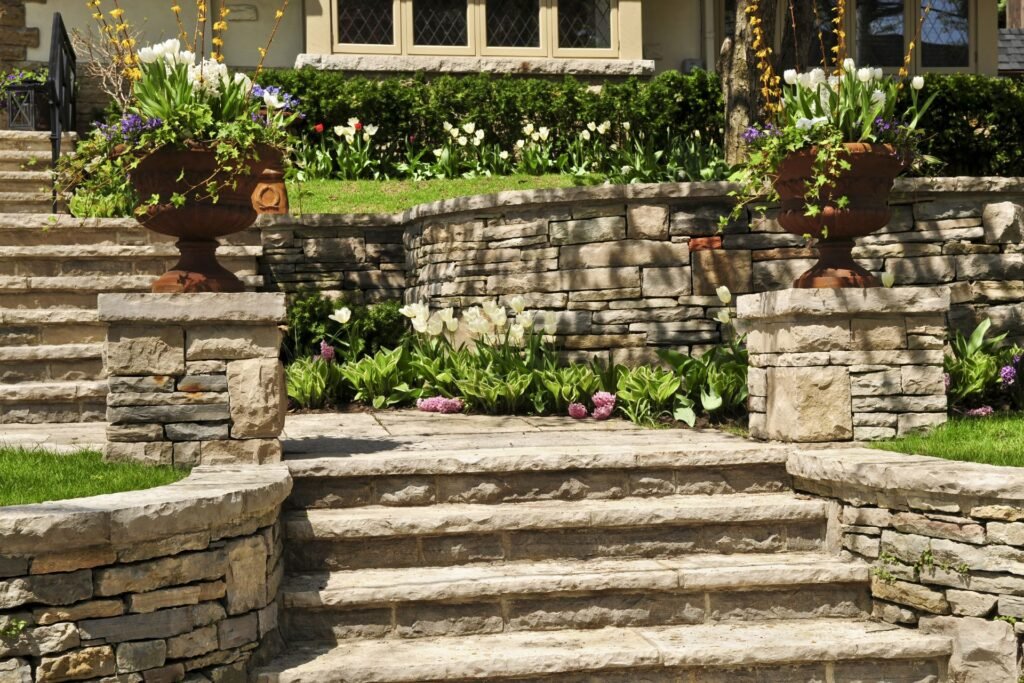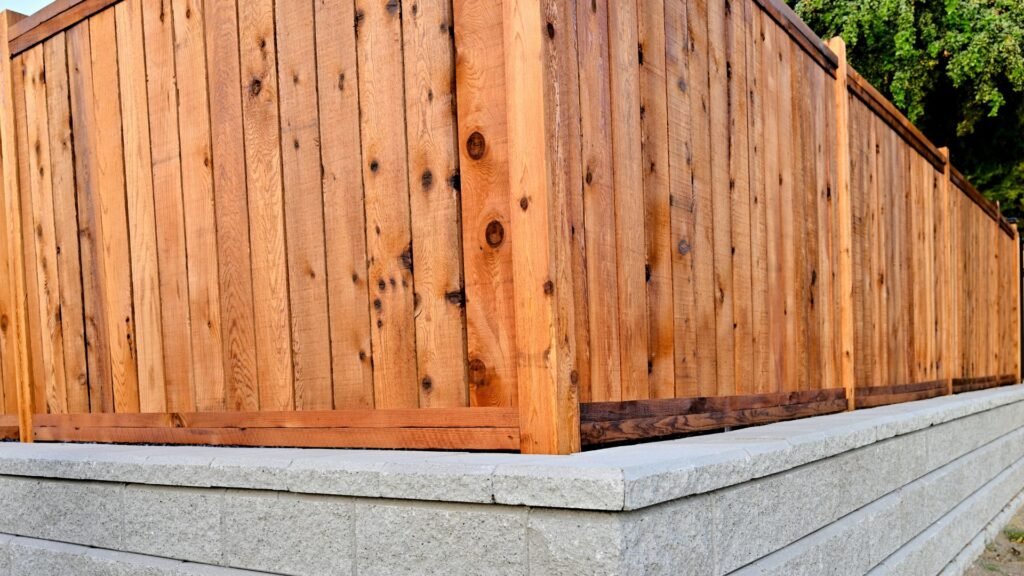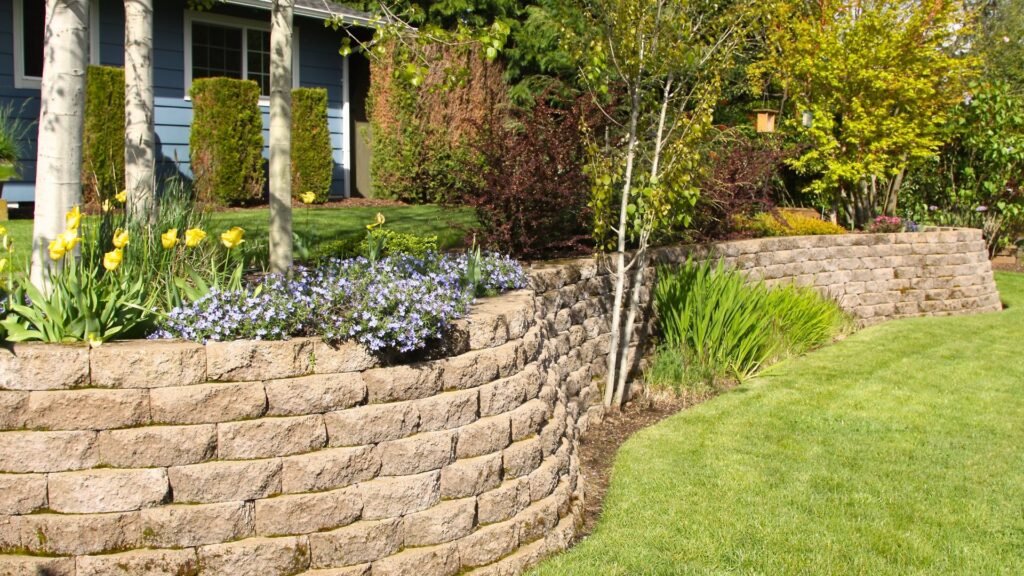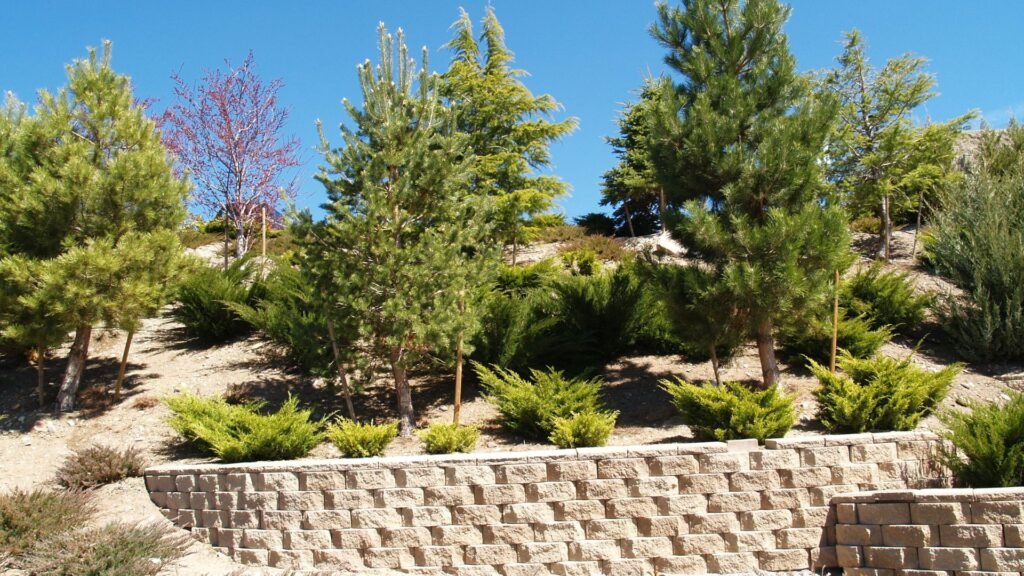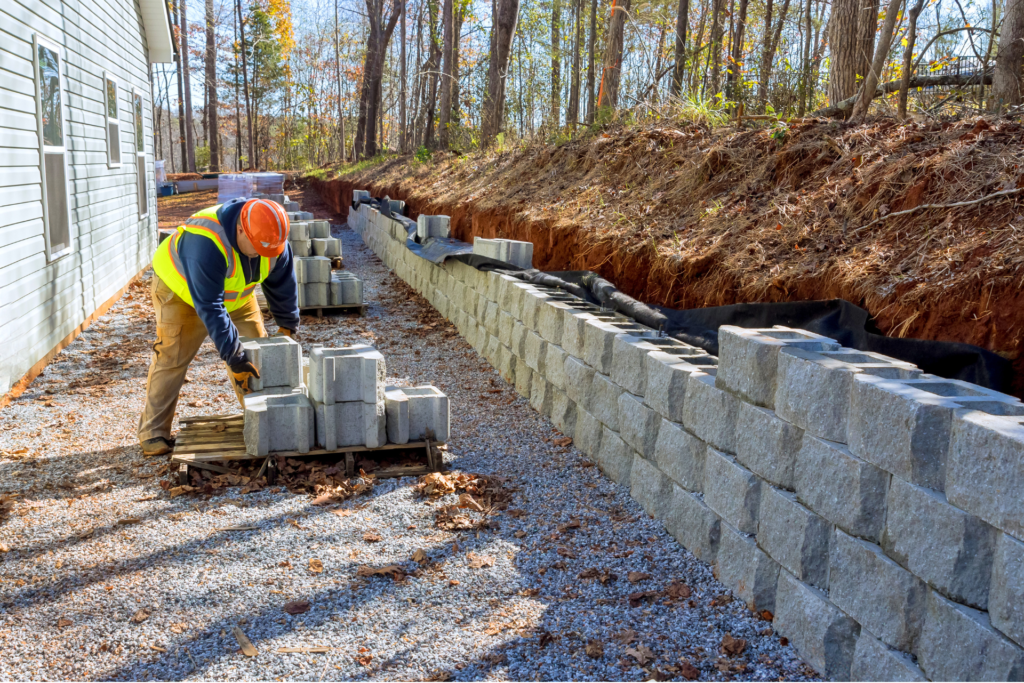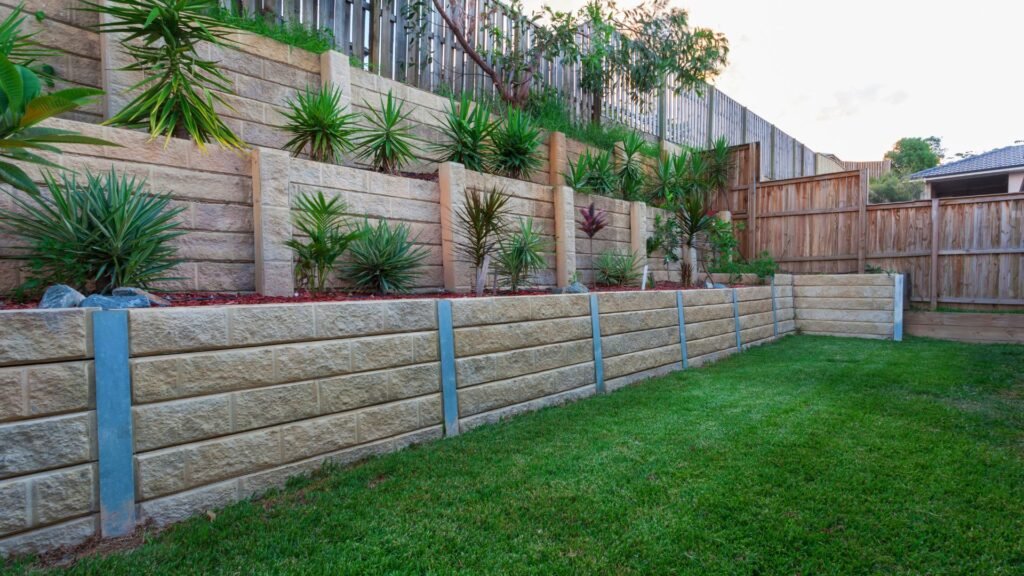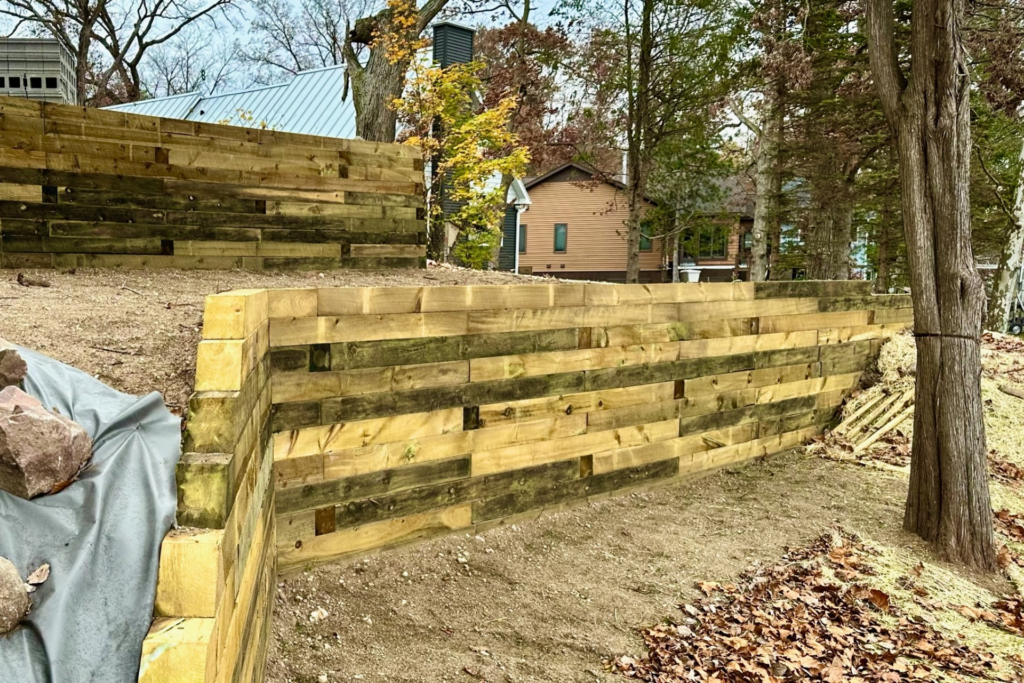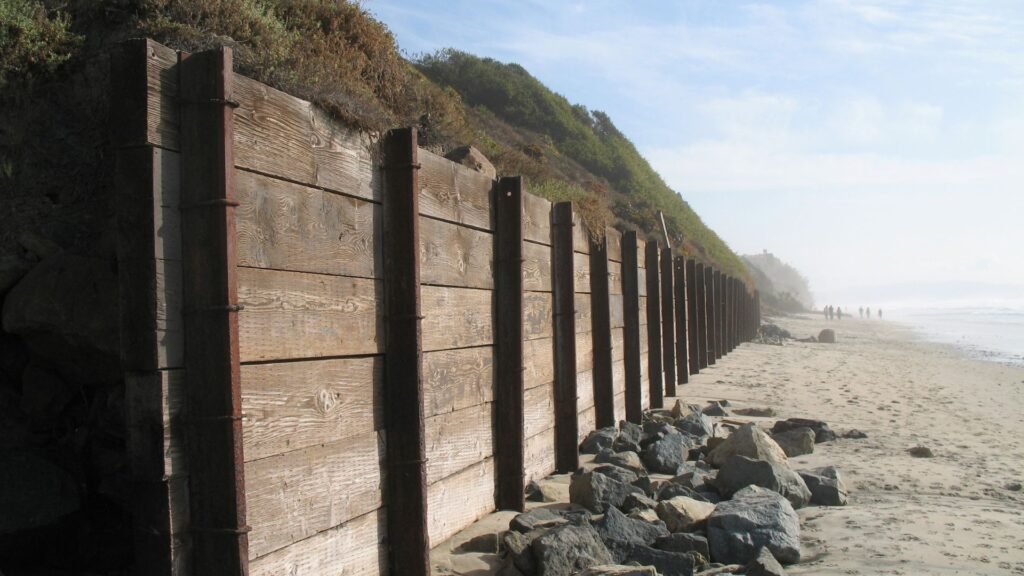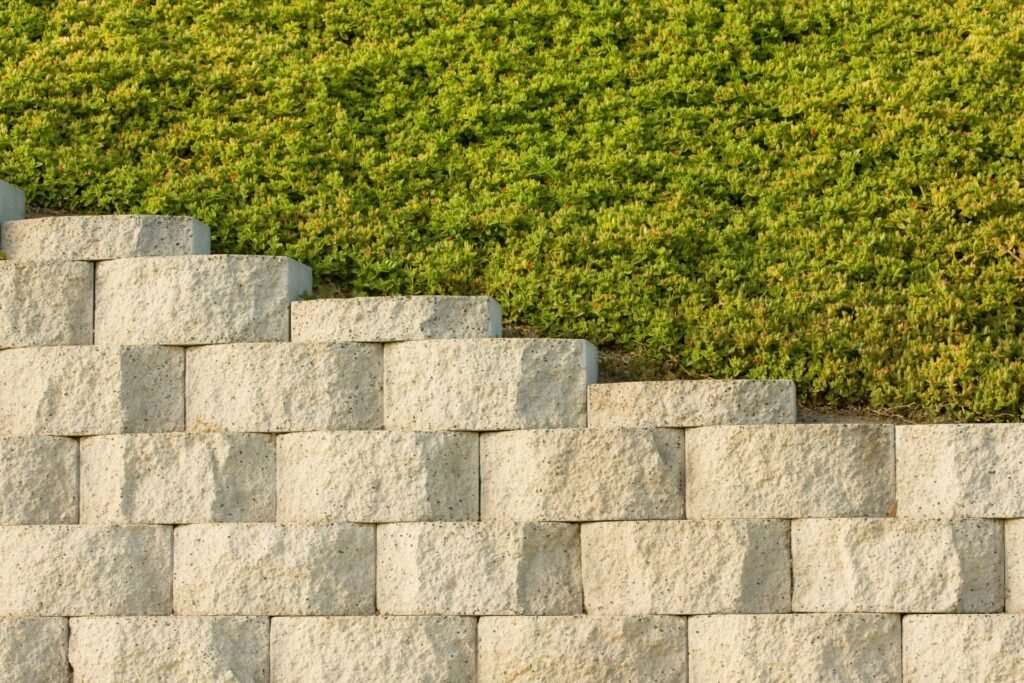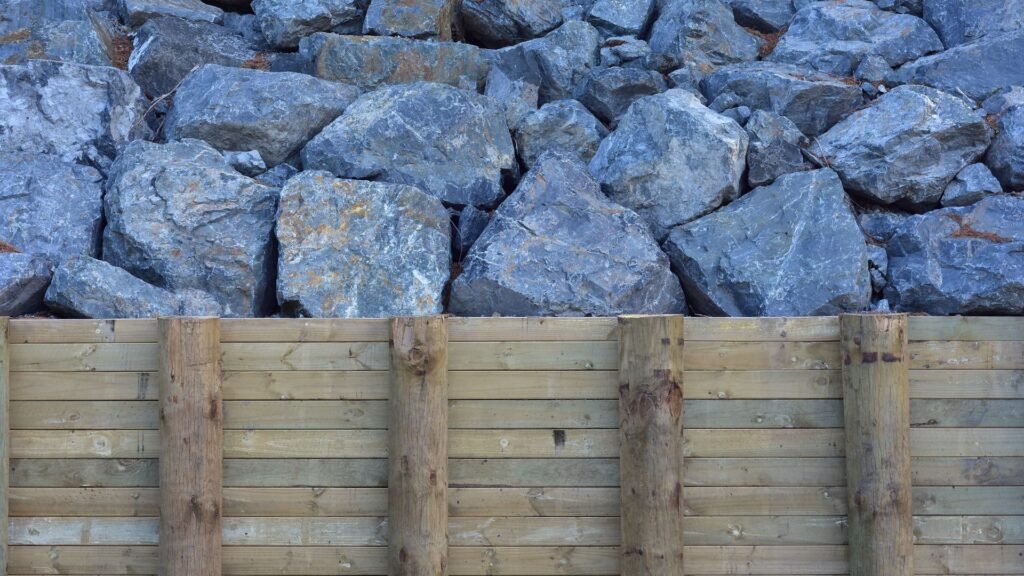Welcome to your ultimate guide on choosing the best sleepers for retaining walls! Whether you’re looking to create a sturdy and visually appealing retaining wall for your garden or backyard, selecting the right sleepers is a crucial first step. In this post, we’ll walk you through everything you need to know about sleepers, from the different types available—wood, concrete, and composite—to the key factors that will help you make an informed choice. Whether you’re a DIY enthusiast or a homeowner looking to enhance your outdoor space, by the end of this guide, you’ll feel confident in building a durable, attractive retaining wall that suits your needs. Let’s dive in.
The best sleepers for retaining walls depend on your project needs. Wooden sleepers, like treated pine or hardwood, offer a rustic look and are easy to install, making them ideal for smaller or budget-friendly projects. Concrete sleepers, on the other hand, are more durable and long-lasting, perfect for large or structural walls. For an eco-friendly option, composite sleepers made from recycled materials provide a low-maintenance solution with excellent resistance to rot and pests. Consider factors like durability, cost, and aesthetics when choosing the right sleepers for your retaining wall.
Table of Contents
What Are Sleepers, And Why Are They Used For Retaining Walls?
Definition of Sleepers
Sleepers, also known as railroad ties or garden sleepers, are long, flat beams made from wood, concrete, or sometimes steel. Traditionally, they were used in railway tracks to support the rails, but today, sleepers have found a versatile role in landscaping and construction. In the context of retaining walls, they serve as structural components that help hold back soil, create terraced landscapes, or simply add a decorative touch to gardens and outdoor spaces.
Why Use Sleepers for Retaining Walls?
Sleepers are a popular choice for retaining walls due to several advantages:
1. Durability
Wooden or concrete sleepers are designed to withstand pressure and last for many years. Treated wooden sleepers resist decay and weather damage, making them ideal for outdoor use. Concrete sleepers, on the other hand, offer incredible strength and longevity, requiring little maintenance.
2. Cost-Effectiveness
Compared to other materials like stone or brick, sleepers are more affordable while still providing a robust solution for retaining walls. Wooden sleepers, especially reclaimed ones, are particularly budget-friendly, while concrete sleepers offer a cost-effective option with long-term value due to their durability.
3. Aesthetic Appeal
Sleepers add a unique visual charm to any garden or landscape. Wooden sleepers, in particular, give off a rustic or natural feel, ideal for those seeking a more organic look. Concrete sleepers can be styled to suit a modern aesthetic, offering clean lines and a sleek appearance. This versatility in style makes sleepers a go-to option for both traditional and contemporary designs.
4. Ease of Installation
One of the biggest advantages of using sleepers is how easy they are to install. Whether you’re a DIY enthusiast or a professional landscaper, sleepers are relatively simple to work with. They can be stacked, laid flat, or positioned upright, depending on the design. Their manageable size and shape make the construction process much less labor-intensive compared to building with stone or brick.
Common Types of Retaining Walls
Retaining walls serve an essential function in landscaping and construction by preventing soil erosion, stabilizing sloped areas, and creating level ground for gardening, patios, or walkways. These walls help manage water runoff, protect against landslides, and even expand usable yard space. Sleepers, with their strength and flexibility, are a perfect material for building retaining walls that can withstand pressure while adding beauty to the landscape.
By choosing sleepers for your retaining wall project, you get a practical, cost-efficient, and visually appealing solution that enhances the functionality and look of your outdoor space.

Types Of Sleepers For Retaining Walls
Retaining walls are crucial elements in landscaping, offering both aesthetic appeal and structural support for soil and terrain. The choice of sleepers used in retaining walls plays a pivotal role in their durability, design, and functionality. In this detailed guide, we’ll explore the three primary types of sleepers—wooden, concrete, and composite—and delve into the pros, cons, and best use cases for each.
1. Wooden Sleepers for Retaining Walls
Wooden sleepers are a popular choice for retaining walls due to their natural aesthetic, versatility, and ease of use. However, not all wooden sleepers are created equal, and the type you choose will greatly impact the longevity and performance of your retaining wall.
Treated Pine Sleepers
Treated pine sleepers are a go-to for those working with a tight budget. Here are some key benefits and drawbacks:
Pros:
- Affordability: Treated pine is generally one of the most budget-friendly options, making it accessible for smaller or DIY projects.
- Lightweight: Easier to handle compared to other types of wood, making installation simpler, especially for novice builders.
- Workability: Easy to cut and shape, allowing for customization in a variety of landscaping designs.
Cons:
- Durability: While treated to resist rot, treated pine does not last as long as hardwood options, meaning it may need to be replaced sooner.
- Maintenance: Even with treatment, pine may require additional protection or re-treatment over time to prevent decay.
- Best for: Small retaining walls in low-budget projects where the look of natural wood is desired without breaking the bank.
Hardwood Sleepers (Oak, Jarrah, etc.)
Hardwood sleepers like oak and jarrah are premium options, known for their strength and longevity. They are ideal for projects where durability is a key concern.
Pros:
- Durability: These woods are incredibly durable and naturally resistant to rot and pests, often lasting for decades without significant wear.
- Aesthetic: The rich, natural grain of hardwoods adds a touch of luxury to any outdoor space.
Cons:
- Weight: Hardwood sleepers are significantly heavier than treated pine, which can make installation more difficult and may require professional help.
- Cost: These sleepers come with a higher price tag, reflecting their superior quality and durability.
Best for: High-end projects or retaining walls where longevity and strength are the top priorities. Hardwood is also an excellent choice for areas exposed to harsh environmental conditions.
Recycled Railway Sleepers
For those seeking a rustic, eco-friendly option, recycled railway sleepers offer a unique, weathered appearance with a sustainable edge.
Pros:
- Sustainability: Using recycled materials is always a green choice, and railway sleepers provide a second life for otherwise discarded wood.
- Aesthetic: The aged, weathered look of these sleepers gives a distinctive vintage charm to any landscape design.
Cons:
- Chemical Treatment: Many recycled railway sleepers are treated with creosote, a preservative that can be harmful if it comes into direct contact with plants or humans.
- Difficulty in Handling: Railway sleepers tend to be heavier and more cumbersome than newer wooden options, making installation more labor-intensive.
- Best for: Rustic or vintage-style gardens, as well as eco-conscious homeowners looking to minimize waste and reduce their environmental footprint.
2. Concrete Sleepers for Retaining Walls
Concrete sleepers are synonymous with strength and longevity, making them a reliable choice for large, structurally demanding retaining walls. Their modern appeal also suits contemporary landscaping styles.
Pros:
- Extreme Durability: Concrete sleepers are virtually immune to the elements—weather, rot, and pests pose no threat.
- Low Maintenance: Once installed, concrete requires little to no upkeep, making it a hassle-free option.
- Longevity: These sleepers can last for decades without deteriorating, ensuring the structural integrity of your retaining wall over time.
Cons:
- Heavy: Concrete sleepers are extremely heavy and may require professional installation equipment, driving up initial project costs.
- Limited Design Flexibility: While wood can be easily shaped and customized, concrete comes in pre-fabricated designs, which may limit creativity in certain landscaping projects.
- Best for: Large retaining walls where strength and durability are paramount. Concrete is also ideal for modern, industrial-style landscapes or any project where low maintenance is a must.
3. Composite Sleepers for Retaining Walls
Composite sleepers, often made from recycled plastic and wood fibers, are a newer option that combines the benefits of both wood and concrete while addressing many of their drawbacks.
Pros:
- Eco-Friendly: Many composite sleepers are made from recycled materials, making them an environmentally conscious choice for green landscaping projects.
- Rot-Resistant: Unlike wood, composite sleepers do not rot, ensuring longevity with little to no maintenance required.
- Lightweight: Easier to install than concrete, composite sleepers can often be installed by the homeowner without the need for heavy machinery.
Cons:
- Cost: Composite sleepers can be more expensive upfront than treated pine, though the long-term savings on maintenance may offset this initial investment.
- Strength: While durable, composite sleepers are not as strong as concrete, making them unsuitable for very large or structurally demanding walls.
- Best for: Low-maintenance gardens and eco-friendly landscaping projects. Composite sleepers work well in areas where environmental sustainability and ease of installation are key factors.
Choosing the right type of sleeper for your retaining wall is essential for ensuring both aesthetic appeal and structural integrity. Wooden sleepers, whether treated pine, hardwood, or recycled, offer natural beauty and variety. Concrete sleepers provide unparalleled strength and durability for larger projects, while composite sleepers offer an eco-friendly, low-maintenance alternative. Understanding the pros and cons of each material will help you make the best choice for your specific landscaping needs, ensuring your retaining wall stands the test of time and complements your outdoor space beautifully.

Installation Guide For Sleepers In Retaining Walls
Building a retaining wall using sleepers—whether wooden or concrete—requires careful planning and precision. This step-by-step installation guide will walk you through the process, ensuring your retaining wall is not only functional but also aesthetically pleasing. Following this guide will help you avoid common pitfalls and ensure the durability of your structure.
Step 1: Planning and Measuring
Before you even break ground, thorough planning is crucial. Start by measuring the slope, height, and soil conditions in the area where you plan to build the retaining wall. These factors will determine the number of sleepers required and how deep your foundation should be.
1. Assess the Slope: Understand the gradient of the slope. The steeper the slope, the more robust your retaining wall must be. A steeper incline may require taller sleepers or a tiered wall design.
2. Soil Type Considerations: Soil type plays a major role in the stability of your retaining wall. Clay-heavy soils may retain water, requiring better drainage systems, while sandy soils might shift, demanding a deeper trench.
3. Height of the Wall: Retaining walls over a certain height (usually around 1 meter) often require council approval or professional advice. Make sure to verify local regulations.
4. Estimating Sleepers: Measure the length and height of the wall to estimate how many sleepers you’ll need. A good tip is to buy slightly more than required to account for cutting errors or unexpected changes in design.
Step 2: Preparing the Ground
Proper ground preparation is key to ensuring the longevity of your retaining wall. Here’s how to prepare the foundation:
1. Digging the Trench: Begin by digging a trench that matches the width of your sleepers. The trench depth depends on the wall height, but typically, about one-third of the sleeper’s height should be buried underground. This creates a solid foundation that prevents the wall from shifting over time.
2. Drainage Setup: Drainage is essential to prevent water buildup, which can create pressure behind the wall and lead to failure. Place a layer of gravel at the base of the trench to promote water flow. You should also line the trench with a filter fabric (geotextile cloth) to prevent soil from clogging the drainage system.
Step 3: Installing the Sleepers
Now that the ground is ready, it’s time to start placing the sleepers. Depending on the material of your sleepers (wooden or concrete), the installation process will vary slightly.
Wooden Sleepers
1. Placing the First Layer: Start by laying the first layer of wooden sleepers in the trench. Ensure they are level by checking with a spirit level. Any misalignment at this stage can affect the stability of the entire wall.
2. Securing the Sleepers: Secure the sleepers into the ground using metal rods or long timber spikes. These should be driven through pre-drilled holes in the sleepers and into the ground, providing a solid anchor. Make sure the rods or spikes are evenly spaced to distribute the weight and pressure.
3. Stacking Additional Layers: Once the base layer is secure, stack the next layer of sleepers on top. Offset the joints between layers (much like building a brick wall) for added strength. Secure each layer with long wood screws or metal brackets for stability.
Concrete Sleepers
1. Managing Weight: Concrete sleepers are much heavier than wooden sleepers, so you may need assistance or specialized lifting equipment. Their weight provides excellent durability, but they also need strong anchoring.
2. Securing with Steel Posts: For concrete sleepers, steel posts should be installed into the ground at regular intervals. These posts will hold the sleepers in place. Slide the sleepers between the posts, ensuring they are level.
3. Adding Mortar or Concrete: For extra strength, you can apply mortar or concrete between the layers of sleepers. This helps bond them together, making the wall more resilient to pressure and weathering.
Step 4: Finishing Touches
Once the sleepers are installed, it’s time to finalize the look and ensure the wall is ready to perform its function.
1. Capping and Aesthetic Details: Add a capping or top layer to the wall for a finished look. This can be done using a thinner sleeper, decorative stone, or another material that complements your landscape. Not only does this enhance the appearance, but it also provides added protection from weather damage.
2. Backfilling and Drainage: The final step is to backfill the area behind the retaining wall with soil. As you do this, ensure the soil is compacted in layers to reduce settling over time. Incorporate additional gravel behind the wall to aid in drainage, ensuring water doesn’t accumulate and cause pressure buildup behind the sleepers.
By following these steps carefully, your sleeper retaining wall will be structurally sound, long-lasting, and visually appealing. Remember, each step is crucial to the wall’s performance, from the initial planning and measuring to the final backfilling and finishing touches. When done correctly, your retaining wall will serve as both a functional and beautiful addition to your outdoor space.

Pros And Cons Of Different Sleepers For Retaining Walls
When choosing sleepers for retaining walls, it’s important to weigh the pros and cons of each material. Whether you’re focusing on budget, durability, or aesthetics, different sleepers bring unique strengths and weaknesses to the table. Let’s break down the key types: wooden, concrete, and composite sleepers.
Wooden Sleepers: Pine, Hardwood, and Recycled Railway Sleepers
Wooden sleepers are a popular choice for retaining walls due to their natural look and relatively simple installation process. However, not all wooden sleepers are created equal. The durability and cost vary depending on whether you choose pine, hardwood, or recycled railway sleepers. Let’s compare each.
1. Pine Sleepers
Pros:
- Affordability: Pine is one of the most cost-effective options for retaining walls.
- Ease of installation: Pine is lightweight and easy to work with, making it a good option for DIY projects.
- Aesthetic appeal: The natural grain and light color of pine provide a rustic, organic look.
Cons:
- Durability: Pine is a softwood, meaning it’s less durable than hardwood alternatives. It’s prone to rot and insect damage if not properly treated, especially in moist conditions.
- Longevity: Even with treatment, pine sleepers have a shorter lifespan compared to hardwood or other materials.
2. Hardwood Sleepers
Pros:
- Durability: Hardwood sleepers, such as oak or jarrah, are much more durable than pine and can withstand harsh weather conditions without warping or rotting.
- Longevity: When properly maintained, hardwood sleepers can last several decades, offering excellent value in the long run.
- Aesthetic appeal: Hardwood provides a rich, natural look that can enhance the visual appeal of any outdoor space.
Cons:
- Cost: Hardwood sleepers are significantly more expensive than pine, which can make them less appealing for budget-conscious projects.
- Weight: Hardwood is heavier than pine, making installation more labor-intensive and requiring more manpower or equipment.
3. Recycled Railway Sleepers
Pros:
- Strength: Recycled railway sleepers are incredibly strong and have already stood the test of time, making them ideal for structural integrity.
- Sustainability: These sleepers are an eco-friendly option, as they are repurposed rather than newly harvested.
- Aesthetic appeal: With a weathered, industrial look, recycled railway sleepers can add character to your retaining wall.
Cons:
- Inconsistent quality: Since these sleepers have been previously used, their condition can vary, and some may be more worn than others.
- Weight and handling: Like hardwood sleepers, railway sleepers are heavy and may require specialized equipment for installation.
- Chemical treatment: Be aware that many recycled railway sleepers have been treated with chemicals, which may not be ideal for certain environments or close to garden plants.
Concrete Sleepers
Concrete sleepers are becoming increasingly popular for retaining walls due to their strength and longevity. They offer a practical, low-maintenance solution that can outlast many other materials.
Pros:
- Superior strength: Concrete sleepers can support large loads and provide excellent structural support, making them ideal for large retaining walls.
- Longevity: Unlike wood, concrete doesn’t rot, warp, or succumb to insect damage. A well-installed concrete sleeper wall can last several decades with minimal upkeep.
- Low maintenance: Once installed, concrete sleepers require little to no maintenance, saving you time and money in the long run.
Cons:
- Weight: Concrete sleepers are extremely heavy, making them difficult to handle and requiring machinery or additional labor for installation. This can increase project costs.
- Cost: While concrete sleepers are durable, their upfront cost is higher than wood, and the additional installation expenses can also add up.
- Aesthetic appeal: Concrete sleepers may not have the same natural look as wooden options, which could be a drawback for those prioritizing aesthetics over function.
Composite Sleepers
Composite sleepers, often made from recycled materials like plastic and wood fibers, are a more recent innovation in retaining wall construction. These sleepers offer a sustainable alternative with several appealing benefits.
Pros:
- Sustainability: Made from recycled materials, composite sleepers are an eco-friendly choice for environmentally conscious builders.
- Durability: Composite sleepers resist rot, insects, and moisture better than natural wood, making them a long-lasting option.
- Low maintenance: Like concrete, composite sleepers require little upkeep after installation, and they won’t splinter or degrade like wood.
- Ease of installation: Composite sleepers are lighter than concrete and some hardwoods, making installation easier and less labor-intensive.
Cons:
- Cost premium: The biggest downside to composite sleepers is their price. They are often more expensive than both wood and concrete options, especially at the higher end of the market.
- Aesthetic differences: While composite sleepers can be made to mimic the appearance of wood, they may lack the authentic natural grain and texture that some homeowners desire.
Choosing the right sleeper for your retaining wall comes down to balancing cost, durability, installation difficulty, and visual preferences. Wooden sleepers offer a natural aesthetic and affordability, but may lack the longevity of concrete or composite alternatives. Concrete sleepers deliver unmatched strength and durability but can be costly and difficult to install. Composite sleepers combine sustainability and ease of use but may come with a higher price tag. By understanding the pros and cons of each option, you can make a more informed decision that suits your project needs and budget.

Tips For Maintaining Your Sleeper Retaining Wall
Maintaining a sleeper retaining wall is crucial for ensuring its longevity and keeping it structurally sound. Whether your wall is built with wood or concrete sleepers, each material has specific care requirements. By following these maintenance tips, you can protect your investment and avoid costly repairs down the line.
Wood Sleepers: Protecting Against Rot, Pests, and Weather Damage
Wooden sleepers are a popular choice for retaining walls due to their natural, rustic appearance. However, they require regular care to prevent damage from rot, pests, and weather exposure. Wood is prone to degradation over time, especially when exposed to moisture, which makes it essential to treat and protect the wood as part of your maintenance routine.
To protect your wooden sleepers, it’s important to apply a high-quality wood preservative. This treatment should be done every few years to prevent moisture penetration and stave off rot. In addition, sealing the wood helps to create a barrier against insects, such as termites, that can cause significant damage. Choose a sealant designed for outdoor use, ensuring it can withstand rain, sun, and fluctuating temperatures.
By resealing wooden sleepers regularly, you’ll extend their lifespan and preserve the structural integrity of your retaining wall. Keep in mind that untreated wood or neglected sleepers are much more likely to suffer from warping, splitting, or breaking down, which can compromise the entire wall.
Concrete Sleepers: Minimal Maintenance, But Important to Monitor
Concrete sleepers are known for their durability and low maintenance requirements. Unlike wood, they aren’t susceptible to rot or insect damage, which makes them an excellent long-term option for retaining walls. However, while concrete is tough, it’s not entirely maintenance-free.
One key aspect of maintaining a concrete sleeper retaining wall is to monitor drainage. Proper drainage is essential to prevent water from pooling behind the wall, which can increase pressure on the sleepers and lead to structural problems. Ensure that the drainage system remains functional and unobstructed. Regularly check for any blockages, especially after heavy rainfall.
Another thing to look out for is any signs of movement or shifting in the wall. Over time, soil pressure can cause the wall to shift, potentially leading to cracks or destabilization. By catching these issues early, you can prevent them from becoming more severe and avoid expensive repairs.
General Maintenance: Ensuring Long-Term Stability
In addition to material-specific care, there are general maintenance steps that apply to both wood and concrete sleeper retaining walls. Regular inspections are vital for catching small issues before they escalate. Every few months, take the time to walk along the wall and check for any visible signs of damage, such as warping, cracking, or misalignment.
One major factor to be aware of is soil pressure. The soil behind the retaining wall can exert a lot of force, which may cause sleepers to bow or crack if the wall isn’t structurally sound. Look for any signs of bulging or movement that might indicate too much pressure is being applied. If necessary, you may need to adjust the drainage system or add reinforcements to relieve some of the stress on the wall.
By staying proactive with maintenance, you can ensure your sleeper retaining wall stays strong and reliable for years to come. Regular checks, proper treatment, and early interventions will help you avoid costly repairs and preserve the overall appearance and function of your outdoor space.

FAQs: About Best Sleepers For Retaining Wall
What is the best sleeper material for a retaining wall?
The best sleeper material depends on your needs and preferences. For a rustic, natural look, treated pine or hardwood sleepers are ideal. If you’re looking for durability and strength, concrete sleepers are the top choice. Composite sleepers offer an eco-friendly, low-maintenance alternative. Each material has its pros and cons, so choose based on factors like cost, aesthetic, and longevity.
How long do wooden sleepers last in a retaining wall?
Treated pine sleepers can last 10-20 years if properly maintained, while hardwood sleepers, such as oak or jarrah, can last up to 50 years. Regular maintenance, such as resealing and protecting the wood from moisture and pests, can extend their lifespan significantly.
Are concrete sleepers better than wooden sleepers?
Concrete sleepers are more durable and resistant to weather, pests, and rot, making them a great option for long-lasting retaining walls. However, they are heavier and harder to install than wooden sleepers. Wooden sleepers are easier to work with and offer a natural aesthetic, but may not last as long without proper care.
Can I install a sleeper retaining wall myself?
Yes, you can install a sleeper retaining wall as a DIY project, especially if you’re using wooden sleepers, which are lighter and easier to handle. However, concrete sleepers may require professional installation due to their weight and complexity. For larger or more structurally demanding walls, consulting a professional is recommended.
Do I need planning permission for a sleeper retaining wall?
In most cases, small retaining walls do not require planning permission. However, local regulations may vary, especially for walls over a certain height (usually around 1 meter or 3 feet). It’s always best to check with your local council or regulatory authority before starting construction.
How do I prevent wooden sleepers from rotting?
To prevent rot, use treated wood sleepers that are designed for outdoor use. Applying a waterproof sealant and ensuring proper drainage behind the retaining wall can also help prevent moisture buildup. Avoid burying wooden sleepers directly in soil without a protective layer, as this can accelerate decay.
How much does it cost to build a sleeper retaining wall?
The cost varies depending on the type of sleeper you choose. Treated pine is the most affordable option, with prices typically ranging from $20 to $50 per sleeper. Hardwood and concrete sleepers are more expensive, with prices ranging from $50 to $150 per sleeper. Additional costs include materials like gravel, steel rods, and labor if you’re hiring a contractor.
What are composite sleepers, and why are they a good option?
Composite sleepers are made from recycled materials, such as plastic and wood fibers, making them an environmentally friendly choice. They are resistant to rot, pests, and moisture, and require minimal maintenance. Composite sleepers are lightweight and easy to install but can be more expensive than wood or concrete options.
How do I ensure proper drainage behind my retaining wall?
Proper drainage is critical to the longevity of your retaining wall. Install a layer of gravel or crushed stone behind the sleepers to allow water to drain away from the wall. You can also add a drainage pipe at the base of the wall to prevent water from building up and putting pressure on the structure.
Can sleepers be used for retaining walls of any height?
Wooden sleepers are generally suitable for walls up to about 1 meter (3 feet) in height. For taller retaining walls, concrete sleepers or reinforced wooden sleepers are recommended due to their greater structural strength. For walls exceeding 1 meter, it’s advisable to consult an engineer or a professional for proper design and support.
Conclusion
In conclusion, choosing the right type of sleeper for your retaining wall—whether wood, concrete, or composite—should be based on key factors such as durability, aesthetics, and budget, all tailored to your project’s unique needs. With this information in hand, you can confidently begin planning your retaining wall project, knowing you’ve made an informed decision. If you need further guidance, feel free to explore additional resources like step-by-step guides or local supplier recommendations to help you move forward smoothly. We invite you to share any questions or comments below about your specific project, and we’re here to assist!
About the Author:
Mike Veail is a recognized digital marketing expert with over 6 years of experience in helping tradespeople and small businesses thrive online. A former quantity surveyor, Mike combines deep industry knowledge with hands-on expertise in SEO and Google Ads. His marketing strategies are tailored to the specific needs of the trades sector, helping businesses increase visibility and generate more leads through proven, ethical methods.
Mike has successfully partnered with numerous companies, establishing a track record of delivering measurable results. His work has been featured across various platforms that showcase his expertise in lead generation and online marketing for the trades sector.
Learn more about Mike's experience and services at https://theleadguy.online or follow him on social media:

